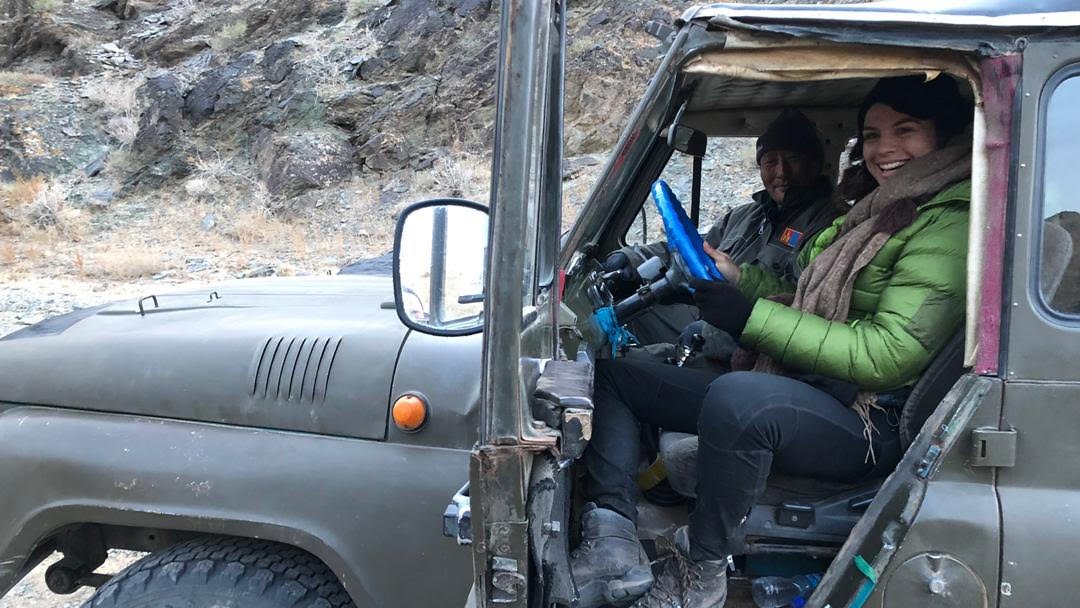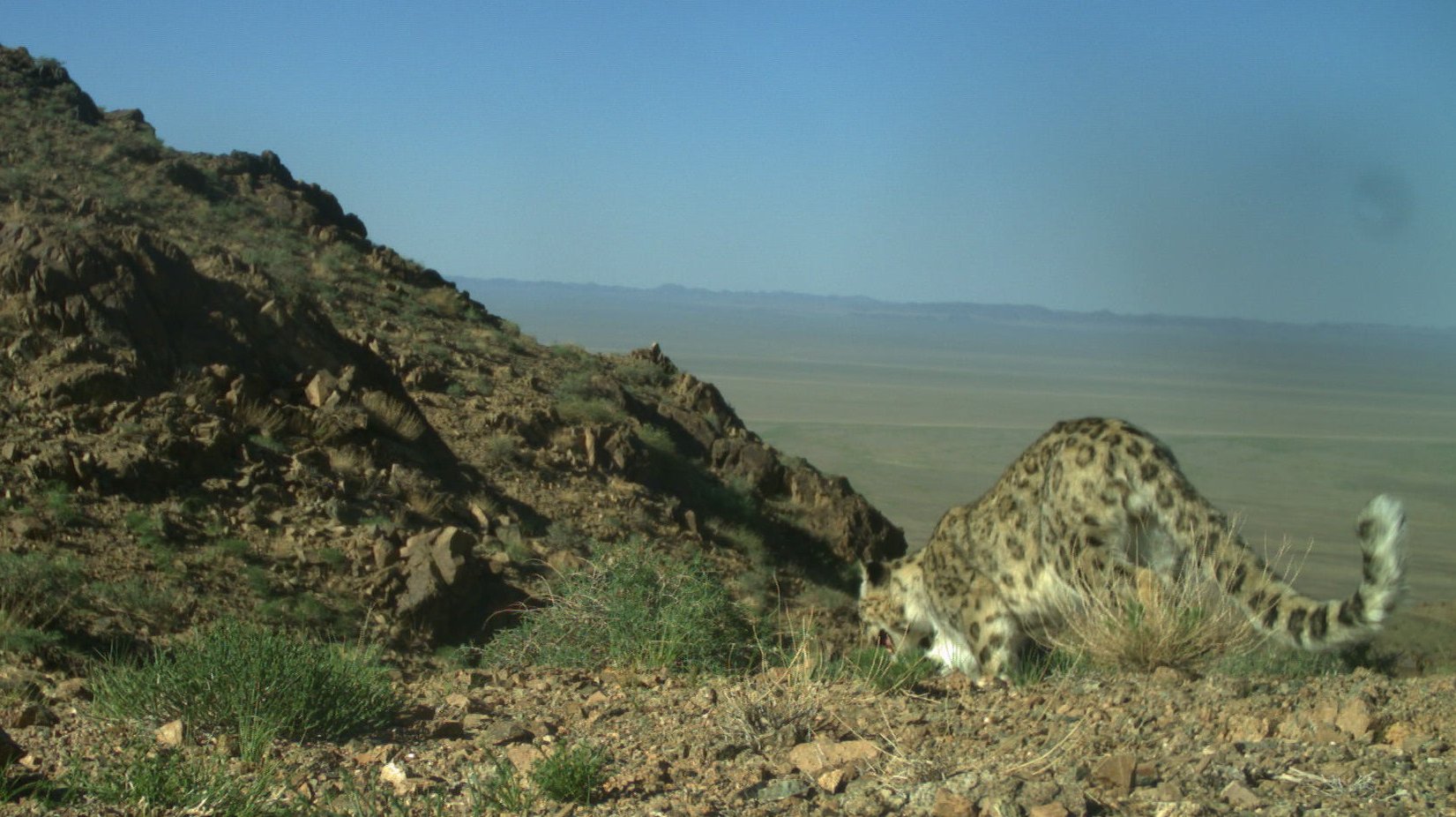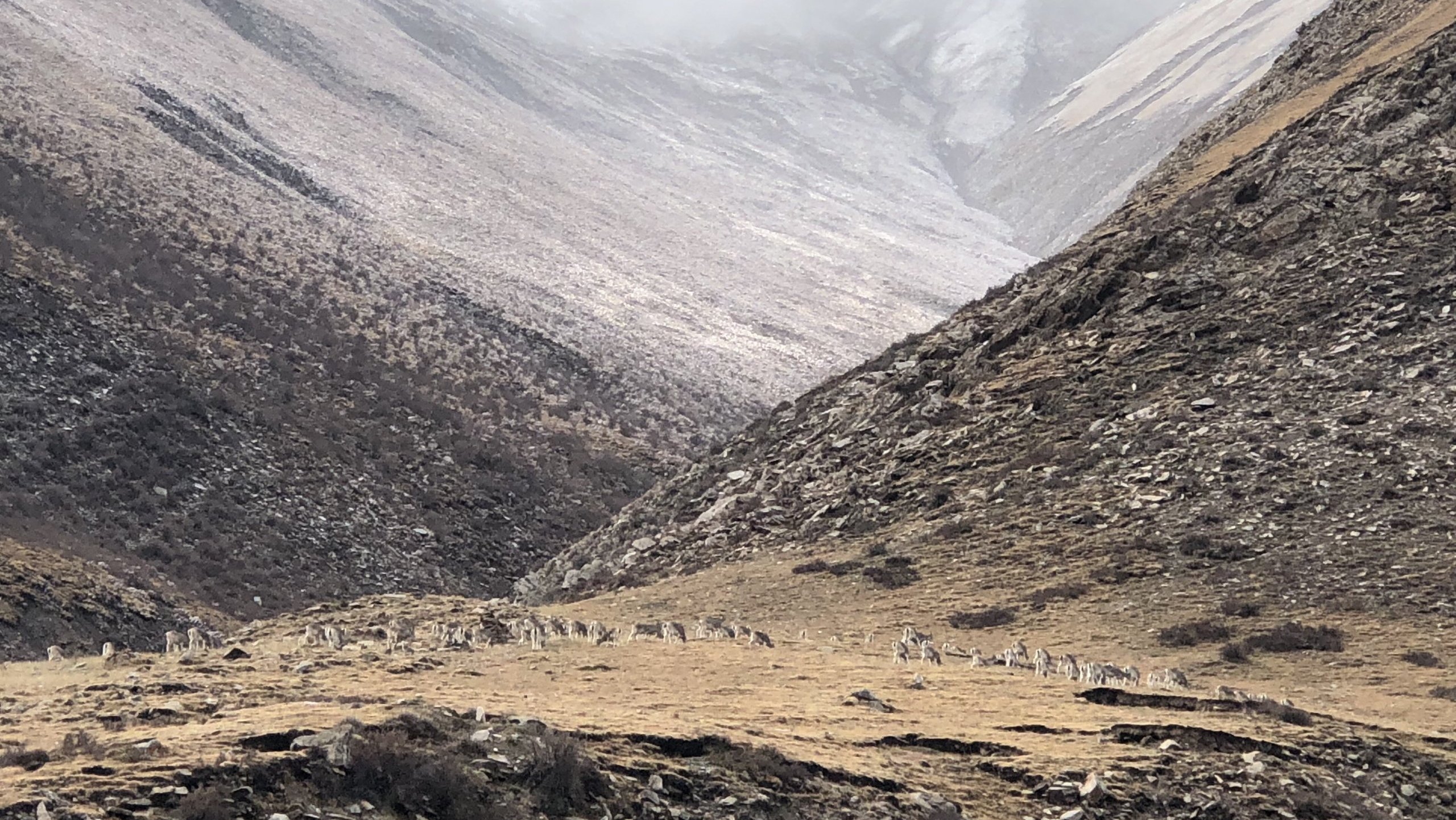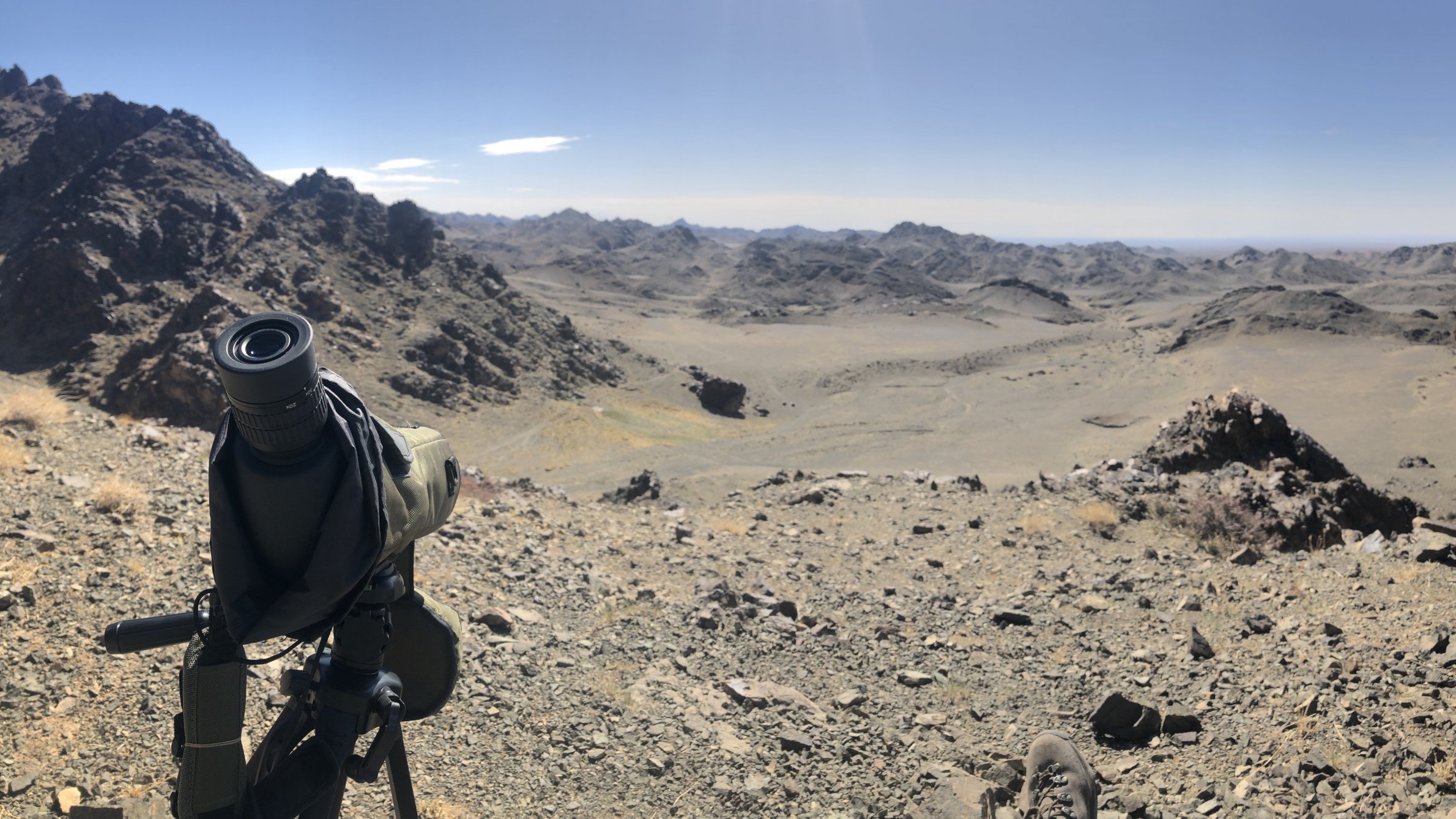This piece comes to us from the Wildlife Conservation Society (WCS). To honor Women’s History Month, WCS and Nature are bringing you stories of women in the fields of nature and conservation.

Justine and rangers surveying ungulates in the South Gobi Mongolia. Photo credit: Justine Shanti ©WCS
I was raised with a “third culture” upbringing, where home meant where my family was at a given time and not knowing what to answer when asked, “Where are you from?” The name “Justine” is from my French mother, “Alexander” from my Scottish father, and my middle name, “Shanti,” references my Sri Lankan roots.
In India, where I spent most of my earlier years, I remember my sense of awe when I spotted my first tiger at the age of 7 in Corbett National Park. That early experience gave me a deep curiosity and respect for nature in all its forms. I vividly remember the moment—I was around eight or nine years old—when I knew that working in conservation was an actual career path and that women could take leading roles.
While in primary school in New Delhi, a young woman conservationist visited our school to speak about tiger conservation and how she had dedicated her life to protect wildlife. In landscapes where large carnivores shared space with people, she told us, it was essential to work with communities to promote coexistence. That core idea took root in me.

Snow leopards are perfectly adapted to the cold, barren landscape of the rugged mountains of High Asia. Photo credit: ©WCS Mongolia
Twenty years later, I found myself finalizing my PhD, focusing on snow leopard conservation on the Tibetan Plateau through Beijing Forestry University in China. My doctoral research took an interdisciplinary approach to understand the threats facing snow leopards in the context of unregulated mining and pastoral communities sharing space with this elusive big cat.
Did you know that snow leopards cannot roar? The absence of that ability has not hindered these majestic and elusive big cats from captivating our imagination. They are perfectly adapted to the cold, barren landscape of the rugged mountains of High Asia, but their future is uncertain due to threats that include direct killing, habitat loss and fragmentation, and climate change.
Snow leopards’ main prey species—wild sheep and goats—are also threatened by illegal or unsustainable hunting in many parts of the snow leopard range. And as if that were not enough, snow leopards also face threats from extractive industry and other large-scale development that could destroy the mountain ecosystem they rely on.

A herd of blue sheep on the Tibetan plateau, China. Photo credit: Justine Shanti ©WCS
I am currently privileged to serve as Mongolia Country Director for the Wildlife Conservation Society (WCS). Our dedicated team is in a race against time to support conservation efforts and promote the conservation of several additional species that occupy large-scale ranges similar to those of the snow leopards. These include nomadic ungulates such as the Asiatic wild ass, Mongolian gazelle, and more.
One of the areas we work in lies nestled in the northeastern tip of the snow leopard range within the vast expanse of the South Gobi region of Mongolia. This unique corner of the snow leopard’s habitat is characterized not by the towering mountains typically associated with these elusive cats, but rather a low elevation rugged, dry and arid landscape that defies expectations. Here, amidst the rocky outcrops and barren expanses, snow leopards’ presence is felt rather than seen.

Waiting for snow leopard prey—ibex or argali—in the gobi. Photo credit: Justine Shanti ©WCS
Our vision is centered around maintaining the ecological integrity of Mongolia’s landscapes for the benefit of both wildlife and local communities. In this part of the snow leopard range, preserving habitat connectivity and promoting sustainable use for both people and wildlife outside protected areas are paramount—just as the young woman conservationist who inspired me in India all those years ago had suggested it would be.
Today, the challenges are multifaceted. In addition to new fenced-off railways and roads, extensive and largely unregulated mining activities increasingly encroach upon the Gobi steppe, further fragmenting the landscape and disrupting the areas snow leopards travel as they disperse between isolated mountains. Moreover, this steppe area is crucial for some of Mongolia’s other flagship nomadic ungulates, such as the Asiatic wild ass.

Always roaring with snow leopards. Photo credit: ©Snow Leopard Foundation Mongolia
Through collective efforts with pastoral communities and stakeholders, we are beginning to support community-led conservation initiatives, ensuring the long-term survival of snow leopards, the goitered gazelle, mountain species like argali and ibex, and the ecosystems they inhabit.
In my team in Mongolia, I feel lucky to work with many women who are taking on leadership roles in conservation. I hope that more women, as well as individuals of other genders, will choose the path of conservation as a career; the snow leopards need us to keep roaring for them.
